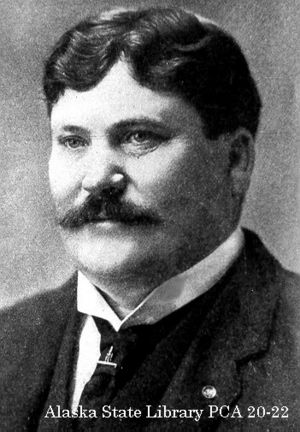Wilds P. Richardson facts for kids
Quick facts for kids
Wilds Preston Richardson
|
|
|---|---|

Wilds P. Richardson as president of the ARC (1905-1917)
|
|
| Born | March 20, 1861 Hunt County, Texas, Confederate States of America |
| Died | May 20, 1929 (aged 68) Washington D.C., United States of America |
| Years of service | 1884 - 1920 |
| Rank | Brigadier general |
Wilds Preston Richardson (born March 20, 1861, died May 20, 1929) was an important officer in the United States Army. He was famous for exploring and mapping Alaska in the early 1900s.
During World War I, he became a brigadier general. Because he knew a lot about cold weather, he was chosen to lead the Polar Bear Expedition. This was a part of a bigger effort called the Allied intervention in the Russian Civil War. After the war, Richardson retired and passed away in Washington, D.C..
Contents
Early Life and Education
Wilds Preston Richardson was born on March 20, 1861. His parents were Oliver P. and Hester F. Richardson. He was born in Hunt County, Texas.
After going to school in his home county, Wilds Richardson got a special chance. He was accepted into the United States Military Academy at West Point in 1880. This is a very famous military school.
Military Career and Alaskan Adventures
After finishing West Point in 1884, Richardson became a second lieutenant. He joined the 8th Cavalry Regiment. He served in places like California and other areas in the western United States.
In 1889, he was promoted to first lieutenant. Three years later, he became a teacher at West Point.
Exploring and Building in Alaska
In 1897, Richardson was sent to Alaska. He would stay there for twenty years. At first, his job was to find good places for military bases. He also helped manage their construction.
In 1905, Richardson was put in charge of the Alaska Road Commission. This group, part of the War Department, built roads in Alaska.
His biggest project was building a 380-mile (610 km) road. This road went from Valdez to Fairbanks. Later, this important road was named the Richardson Highway in his honor.
World War I and the Polar Bear Expedition
When the United States joined World War I, Richardson was promoted. He became a brigadier general in August 1917. In March 1918, he was given command of the 78th Infantry Brigade. This unit was part of the 39th Infantry Division.
Richardson's unit arrived in Brest, France, on September 3, 1918. They took part in the final battles of the war. After the war ended, General John J. Pershing gave Richardson a special assignment. Because of his experience in cold weather from Alaska, he was sent to Murmansk. There, he led the Polar Bear Expedition.
Richardson returned to the U.S. in October 1919. He went back to the rank of colonel. He retired from the army the following October.
Awards and Recognition
Wilds Preston Richardson received the Army Distinguished Service Medal. This award was given to him for his brave actions during the Russian Civil War.
Later Life and Legacy
After retiring, Richardson lived in Washington, D.C. He passed away at Walter Reed Hospital on May 20, 1929. He was buried at West Point, where he had studied.
Several places and things were named to honor him:
- In 1940, a U.S. Army base near Anchorage, Alaska, was named Fort Richardson.
- The trail from Valdez to Fairbanks, which he helped survey, was named the Richardson Trail.
- During World War II, a U.S. Navy transport ship was named General W. P. Richardson in his honor.

